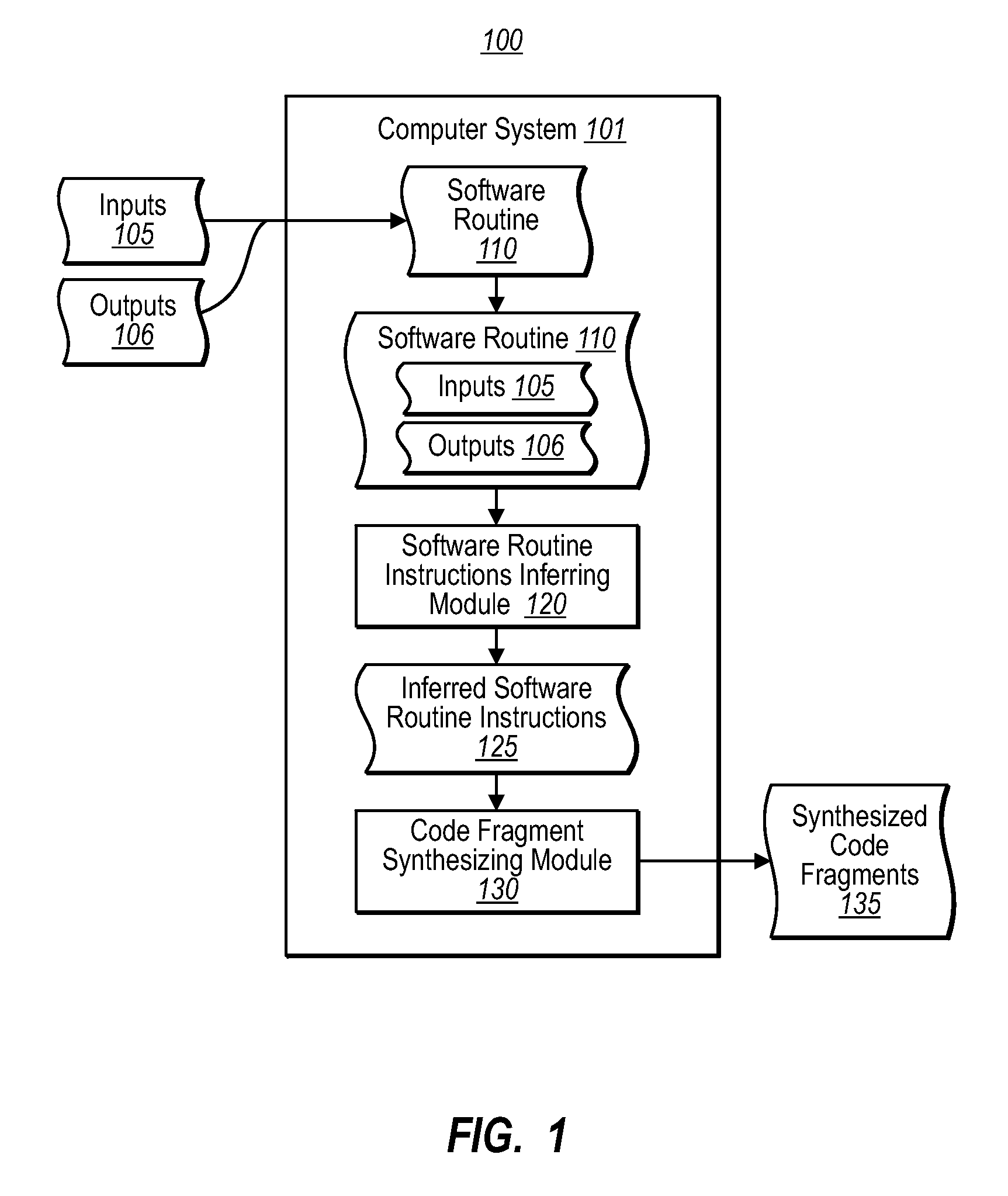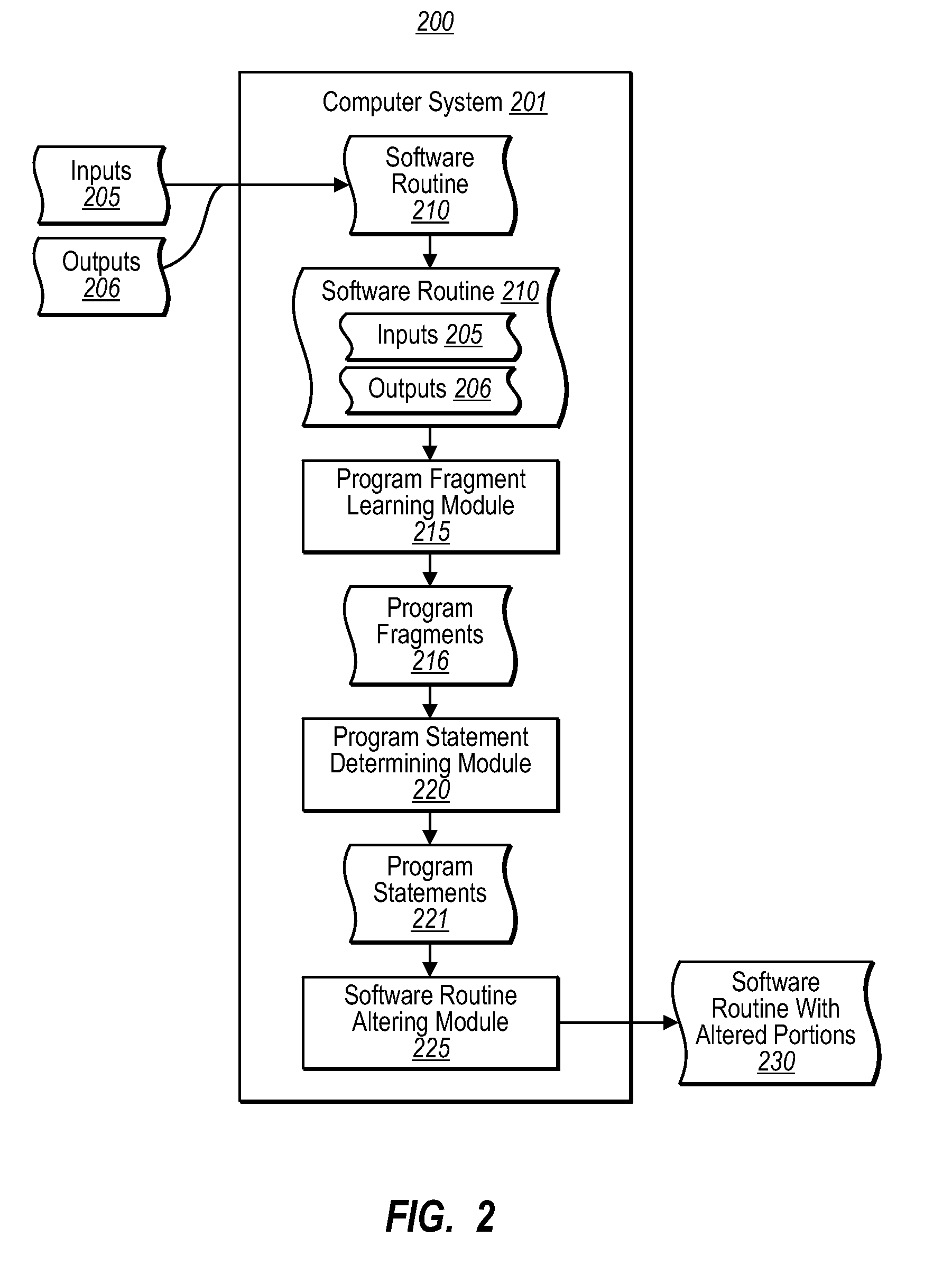Program synthesis and debugging using machine learning techniques
a machine learning and program synthesis technology, applied in the field of program synthesis and debugging using machine learning techniques, can solve the problems of finding syntactical bugs in the source code, writing and debugging source code can be a tedious job for software developers, and the source code is often long and complex
- Summary
- Abstract
- Description
- Claims
- Application Information
AI Technical Summary
Benefits of technology
Problems solved by technology
Method used
Image
Examples
Embodiment Construction
[0014]Embodiments of the present invention are directed to systems, methods and computer program products for synthesizing code fragments in a software routine using known inputs and corresponding expected outputs for portions of the software routine. In one embodiment, a computer system synthesizes code fragments in a software routine using known inputs and corresponding expected outputs for portions of the software routine. The computer system provides a software routine which is capable of producing the desired outputs for the given inputs. The computer system infers software routine instructions based on the known inputs and corresponding expected outputs. The computer system synthesizes a correctly functioning code fragment based on the inferred instructions for use in the software routine. The general expectation, in some embodiments, is that the synthesized code is capable of generalizing the expected behavior beyond the provided input-output pairs (i.e., it provides more tha...
PUM
 Login to View More
Login to View More Abstract
Description
Claims
Application Information
 Login to View More
Login to View More - R&D
- Intellectual Property
- Life Sciences
- Materials
- Tech Scout
- Unparalleled Data Quality
- Higher Quality Content
- 60% Fewer Hallucinations
Browse by: Latest US Patents, China's latest patents, Technical Efficacy Thesaurus, Application Domain, Technology Topic, Popular Technical Reports.
© 2025 PatSnap. All rights reserved.Legal|Privacy policy|Modern Slavery Act Transparency Statement|Sitemap|About US| Contact US: help@patsnap.com



